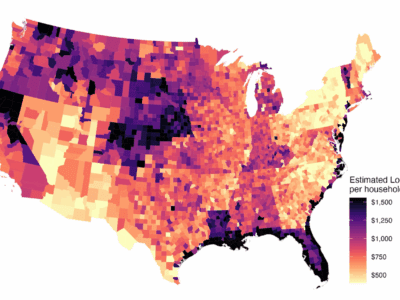Climate Policy, Minnesota-Style
Tim Walz’s selection as a VP candidate has put the state’s policies in the limelight.
Although Minnesota isn’t considered a swing state, it’s not Deep Blue either. Biden got 52% of the vote in 2020. Control of the legislature has been contested, with Democrats having a narrow margin in both Houses recently. The state adopted a forward-looking climate policy in 2007, but by 2015 progress had stalled. Given this background, the state’s progress during the time Walz has been in office (2018-2024) has been impressive. Perhaps most interesting of all, however, has been the state’s recent foray into the tricky issue of permitting reform, intended to accelerate the clean energy transition.
In 2021, the state adopted California’s clean car standards, making use of an option in federal law for other states to piggyback on California’s. In 2022, the state government issued a comprehensive climate plan with Walz’s signature. Then, in early 2023, the legislature enacted a law requiring the state’s utilities to ratchet up the amount of power they get from renewable energy from 25% in 2025 to 55% in 2035, while they must obtain 100% of their power from carbon-free sources by 2040. I must admit that I spent some time puzzling over the relationship between these numbers. The big difference, so far as I can see, is that “carbon free” is a broader category that includes nuclear, geothermal, new large hydropower projects, and fossil fuel generators that capture and sequester their CO2. There are also some off-ramps from the 2040 goal if it proves infeasible.
As I said earlier, the most interesting of Minnesota’s climate efforts may be the new permitting bill, which the Governor signed just over a month ago. Rollout of clean energy has been stymied across the country by delays in issuing permits for transmission and new wind and solar farms. The new legislation contains several reforms (described here and here). First, it exempts many smaller facilities from needing a certificate of public convenience from the public utility commission. Second, it provides expedited review for projects (including transmission lines up to 300,000 volts and some with higher voltages), with the project sponsor preparing the environmental review document and a six-month deadline for decision on the application.
These provisions were outcomes of an intensive stakeholder consultation process undertaken by the utility commission. According to a commentator from Ceres, an association of green investors, “All told, the Minnesota Energy Infrastructure Permitting Act is expected to cut permitting time for individual projects by nine months to a year, shortening the overall approval timeline by 50% or more.”
I lived in Minnesota for over twenty years, and this climate record reflects a strain in Minnesotan thought that is forward-looking and pragmatic. It may provide inspiration for similar efforts in other states.







Reader Comments